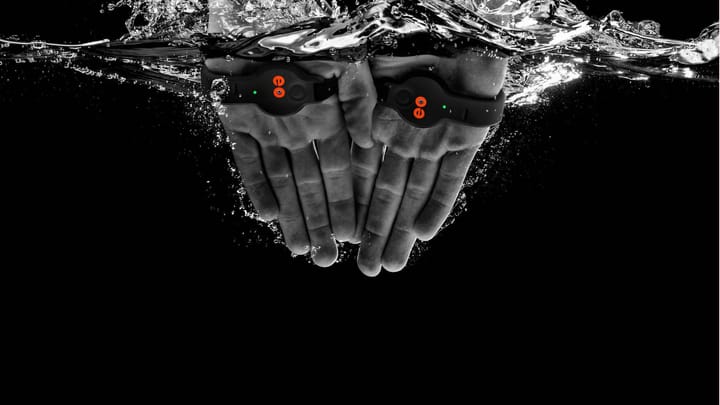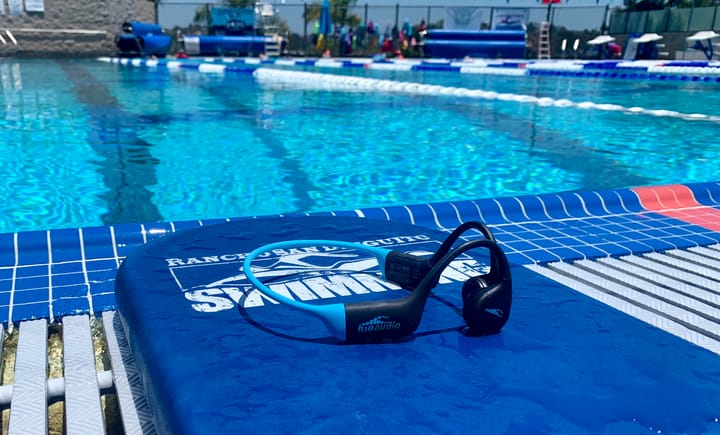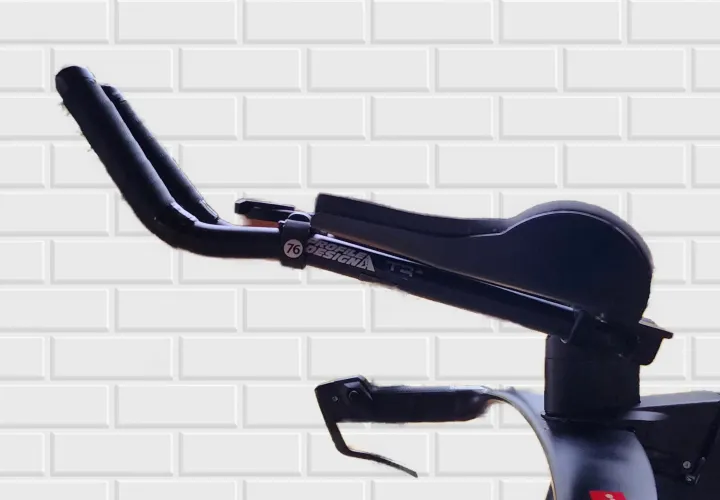Trek Bikes Women Specific Design and 2014 Speed Concept
Women's Specific Design – three very simple words, that when combined make a powerful combination. Women are, as we know, very different to our male counterparts in so many ways. Having ridden bikes for years, we were interested to know exactly what Trek meant by this. So with an in

Women’s Specific Design – three very simple words, that when combined make a powerful combination. Women are, as we know, very different to our male counterparts in so many ways. Having ridden bikes for years, we were interested to know exactly what Trek meant by this. So with an invitation to take a sneak peak inside Trek World in Canberra last weekend, how could we not go? The entire winter wardrobe was raided and we headed south to Canberra to see for ourselves what Trek had to offer the ladies of the triathlon world.
First, what exactly does Trek mean by Women’s Specific Design? Is this simply achieved by adding a few flower decals to their women’s frames? Well yes, you can add whichever decals you like thanks to “Project One”, but more on that later. Let’s have a look at the features that make Trek a fantastic choice for female cyclists and triathletes.
Women’s Specific Design (WSD) – here’s what we noticed
1. WSD Frame: Trek has engineered their WSD frames to fit our unique proportions. Specific geometry adjustments including a shorter reach across a range of sizes have been made to ensure that the correct fit isn’t compromised.
2. WSD components: everyone is not built equal, that’s why Trek have fine tuned their women’s range with the right components to accommodate such differences. WSD stems, bars and crank sets are just a few examples of custom specified components just for women.
3. WSD handlebars: Women are typically narrower in the shoulders than men, thus when matched with a handlebar that is too wide, handling is compromised. WSD bars are narrower to accommodate this, increasing comfort and making your bike handle well
4. WSD saddle: The single biggest challenge women face with cycling comfort comes from their saddle. Two things to note here. First, women are anatomically different to men, thus have different requirements in saddles. Second, not every woman is built the same, thus the saddle that your best friend loves won’t necessarily work for you. Trek WSD bikes are fitted with Bontrager saddles built specifically for women. Features such as Zone Density foam, women’s specific Contour Relief Zone, and Size Specific Curvature to keep you comfortable and supported, plus a split saddle with adjustable width that we will review and share with you shortly.
5. WSD styling: You know the advice; don’t pick your bike on colour. Why though can’t you get a bike with all the right features that looks good too? Trek has you covered, with WSD featuring colours, finishes and details designed for women. Take it a step further and check out Project One, where you can custom colour and design your bike from scratch. Quite simply, the possibilities are endless.
The WSD features can be found on all of Trek’s women’s bikes across the range, from triathlon time trial bikes, road bikes, mountain bikes and bikes for recreational use.
Improvements to the Speed Concept
The Trek team treated us to a day of workshops and lectures to fill us in on all the latest developments, and because we know you would prefer to just hear the relevant facts, we’ve condensed it down for you. Here’s a little sneak peak at some changes introduced within the triathlon line up: the new improved Speed Concept.
We know that women want to look good whilst out riding, yet still wish to ride as fast as they possibly can. Trek has taken their industry leading triathlon time trial bike and improved it, with the Speed Concept announced for 2014 being faster and easier to live with than it’s predecessor. Trek claims the new Speed Concept will save 90 seconds when ridden at an average of 20 mph over an Ironman course. Add Trek’s 2-Pack Rear Hydration System (more on this below) and you could be riding over three minutes faster, for no extra effort!
The changes have come from real world testing (as opposed to in wind tunnels), with aerodynamic measures taken out on world-renowned bike courses including Ironman Hawaii in Kona and Ironman Arizona in the USA. With the everyday triathlete in mind, Trek focused their testing mainly between an average speed of 18 to 22 miles per hour (28 to 35km/hour), as opposed to the 24 miles per hour (39km/hour) that the professional’s might be riding at.
Despite the WSD geometry remaining unchanged, the majority of the aerodynamic gains have been made in the frontal area and fork aerodynamics. Not only is the new Speed Concept aerodynamically better (in simple terms this just means faster) but the changes have also made the bike 437 grams lighter. So yes, it will be much easier to lift up onto the roof racks of your car, and you will most likely be quicker in and out of transitions too!
The other major improvement has come in the area’s known as “dirty air” – being the pockets of space between you and your bike. Between your head and arms on your aero bars, your top tube and torso, and behind your saddle. Better still; these improvements to your speed have also made it easier to store the extra’s you find yourself having to carry on race day.
Storage solutions
Men don’t tend to worry too much about the details, women do. Just think about that 180km bike ride and the extra luggage you have to carry around the course. Gels, bars, banana’s, your home baked cookies for when you need to take a mental break from racing, spare tyre or tubes, C02 canisters, tyre leavers… the list is endless. How many zip ties can you bear placing on your bike? Trek has thought about this, with the Speed Concept featuring a full range of “carriers” to cater for all of those extras.
Storage solutions include:
- Front mounted water bottle cage with computer mount: no more trying to find space on your bike to mountyour computer, or worrying about how your going to carry all of your hydration needs. Trek has also thought about subtle details such as catering to smaller arm widths, creating less rub points to improve comfort and handling over the course of the bike leg – whether this be 20km or 180km.
- Speed box: easy to use, with no straps and minimal fuss. Plastic flaps allow easy access and keep everything in place, with a system that works just like a tissue box. Fits on average about eight gels, and won’t fall off.
- Two-pack rear bottle carrier: A two-bottle saddle mounted rear carrier that has room to carry a few extras. In fact I hear there is so much storage space you could almost “carry your grandma back there!” Better yet this carrier actually makes the bike faster through improved aerodynamics.
- Rear carrier storage: say goodbye to saddle bags and Velcro straps (that can cause chafing problems if they come loose by the way) with Trek’s rear storage compartment that sits behind the seat post. Clicks on and off with a sturdy quick release system.
Maintenance/Traveling
There is another side of riding that you want to consider when purchasing a bike, being maintenance and traveling. How easy is the initial build and can adjustments be easily made along the way as you dial in your position? Trek has made a special effort to ensure the new Speed Concept is user friendly in the initial bike build, maintenance and position adjustments. This also makes travel less stressful, with Trek assuring us the Speed Concept is very simple to assemble and disassemble. Another feature is the zero visible cabling on the frame, making your bike look cleaner and smarter, and reducing the risk of damage and problems out on the road, and whilst traveling.
Free speed anyone?
There are some rules in UCI sanctioned cycling events that don’t apply in triathlons. The people at Trek are pretty smart, and have taken advantage of this by including a removable “speed-foil” which sits below the bottom bracket and acts as a speed faring. You don’t really need to know anymore than the fact that having the “speed-foil” on makes you ride faster. For free.
Thanks to Trek for having us and allowing us to not only check out the exciting new range, but to test ride the bikes for ourselves too! We’ll be doing a full test ride review of the Speed Concept and the Bontrager Hilo RXL Speed Dial saddle very soon, not to mention Trek’s exciting custom concept Project One, so stay tuned!





Comments ()